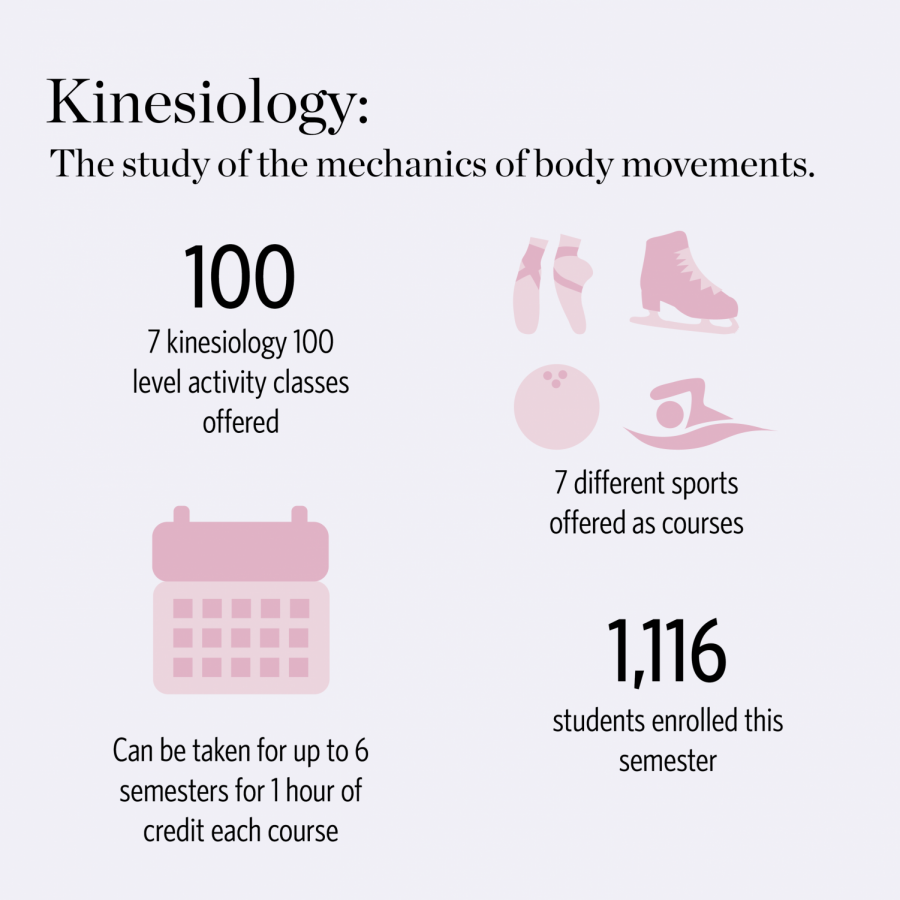Graduate students lead entry level kinesiology courses
SOURCE ILLINOIS CATALOG
Feb 20, 2018
Brynn Adamson, a sixth-year Ph.D. student in kinesiology, has taught KIN 102 for the past six semesters as part of her tuition waivers.
University kinesiology graduate students are gaining experience within their field by instructing basic 100-level kinesiology courses. While a professor oversees the course, graduate students have the flexibility to plan their own classes.
The University offers seven KIN 100-level courses. Each class is just one to two credit hours each, making them a low time commitment.
KIN 102 teaches students how to bowl; though Adamson was not a bowler before, she received training on the necessary skills.
“I used to bowl frequently, but not competitively. I met with previous instructors and used books to learn the skills,” Adamson said. “Every semester I’ve improved, but I don’t have to be a great bowler to teach the bowling class.”
Get The Daily Illini in your inbox!
Instructors may not have experience in the sport taught in class, but the study of body movement allows them to better understand how the sport works.
“Physical activity is defined as any movement involving major muscles. Not all our classes are to build fitness. Bowling won’t build cardiovascular fitness, but it is still considered a physical activity,” Adamson said. “Kinesiology concerns itself with sports and exercise and how they’re related to concepts and activities.”
Adamson said that she enjoys teaching because it allows her to get to know students of all majors who she otherwise wouldn’t be able to interact with.
Isabel Angel, a freshman in LAS, took the KIN 104 class after hearing about it while touring the University in high school.
“When I heard that you could take ice skating for credit, I knew I was going to force myself to take it,” Angel said. “I never learned how to skate as a kid, and now I can skate confidently.”
Angel said she recommends all students take one of the 100-level kinesiology course since they provide a nice break in students’ schedules.
Students may take the kinesiology classes for up to six semesters of credit. Though the majority of the class is spent participating in the activity, students are graded on their understanding of the basic skills.
“For KIN 102, we have skills tests to perform the two main approaches, from picking up the bowling ball to releasing the bowling ball,” Adamson said. “Students have to show they are proficient, and there are written tests on the kinds of grips and identifying components of the lane and the scoring.”
The instruction of these classes helps build experiences working directly with people within the job field.
Nicole Evans, a first year in the kinesiology master’s program, focuses on exercise physiology and hopes to one day work with patients.
“Teaching allows me to better my creative and interpersonal skills,” Evans said. “Some of my students need material explained differently than others, which will be similar to motivating or speaking with patients in the future.”
Evans instructs the KIN 101 dance class despite having no dance experience prior to last semester. She says that she believes that it helps her students with no prior experience feel more comfortable.
“I inform my students that the goal is the have fun and get a great workout,” Evans said. “If myself or a student missteps or forgets a move, no one chastises the person because our goal is not specifically to perform each dance correctly one hundred percent of the time.”
As part of her role as an instructor, Evans choreographs dances with help from YouTube videos.
“Our dances are mainly focused on increasing heart rate and choreographed to encompass very basic dance skills,” Evans said.
Unlike workout classes taught at the ARC, the kinesiology 100-level courses focus more on the skills and techniques behind the sport rather than just burning calories.
Students interested in adding one of the kinesiology courses may still do so. The second section of the 8-week classes begins March 12.
“Classes at the ARC are more an exercise component and there are some KIN 100 level classes that are more physically strenuous,” said Adamson. “But the point of KIN 102 is to learn skills and to perform and to be proficient in the sport.”






